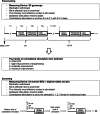Subthalamic stimulation evokes hyperdirect high beta interruption and cortical high gamma entrainment in Parkinson's disease
- PMID: 40287435
- PMCID: PMC12033315
- DOI: 10.1038/s41531-025-00965-6
Subthalamic stimulation evokes hyperdirect high beta interruption and cortical high gamma entrainment in Parkinson's disease
Abstract
Compound network dynamics in beta and gamma bands determine the severity of bradykinesia in Parkinson's disease. We explored its subthalamic stimulation related changes parallel with improvement of complex hand movements. Thirty eight patients with Parkinson's disease treated with bilateral stimulation accomplished voluntary and traced spiral drawing with their more affected hand on a digital tablet. A 64 channel electroencephalography was recorded, low and high beta and gamma power was computed in subthalamic and motor cortical sources at four stimulation levels. Subthalamic cortical effective connectivity was calculated, and subnetwork models were created. Beta power decreased, and gamma power increased in sources ipsilateral to stimulation with increasing stimulation intensity. Networks comprising the primary motor cortex played a dominant role in predicting the improvement of voluntary drawing speed. Subthalamic stimulation diminished the hyperdirect high beta information processing and promoted the cortico cortical interactions of the primary motor cortex in the high gamma band.
© 2025. The Author(s).
Conflict of interest statement
Competing interests: M.M. is the Deputy Editor-in-chief of this journal. Other authors have no competing interest to declare.
Figures









Similar articles
-
Subthalamic stimulation modulates cortical motor network activity and synchronization in Parkinson's disease.Brain. 2015 Mar;138(Pt 3):679-93. doi: 10.1093/brain/awu380. Epub 2015 Jan 2. Brain. 2015. PMID: 25558877 Free PMC article.
-
Stimulation of Cortico-Subthalamic Projections Amplifies Resting Motor Circuit Activity and Leads to Increased Locomotion in Dopamine-Depleted Mice.Front Integr Neurosci. 2017 Sep 28;11:24. doi: 10.3389/fnint.2017.00024. eCollection 2017. Front Integr Neurosci. 2017. PMID: 29033800 Free PMC article.
-
Frequency-specific network activity predicts bradykinesia severity in Parkinson's disease.Neuroimage Clin. 2021;32:102857. doi: 10.1016/j.nicl.2021.102857. Epub 2021 Oct 13. Neuroimage Clin. 2021. PMID: 34662779 Free PMC article.
-
Cortical Control of Subthalamic Neuronal Activity through the Hyperdirect and Indirect Pathways in Monkeys.J Neurosci. 2020 Sep 23;40(39):7451-7463. doi: 10.1523/JNEUROSCI.0772-20.2020. Epub 2020 Aug 26. J Neurosci. 2020. PMID: 32847963 Free PMC article.
-
Sixty-hertz stimulation improves bradykinesia and amplifies subthalamic low-frequency oscillations.Mov Disord. 2017 Jan;32(1):80-88. doi: 10.1002/mds.26837. Epub 2016 Nov 8. Mov Disord. 2017. PMID: 27859579 Review.
References
Grants and funding
LinkOut - more resources
Full Text Sources

